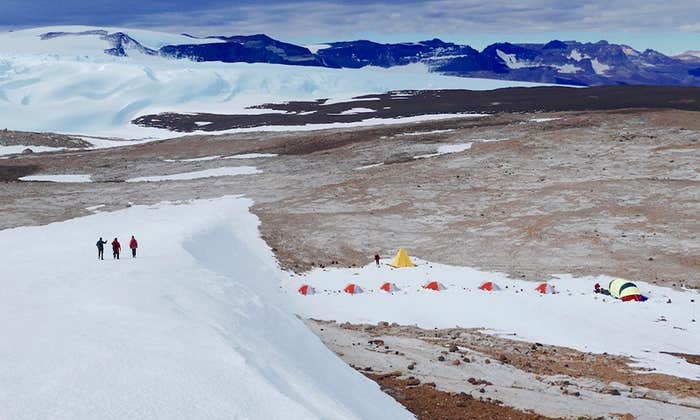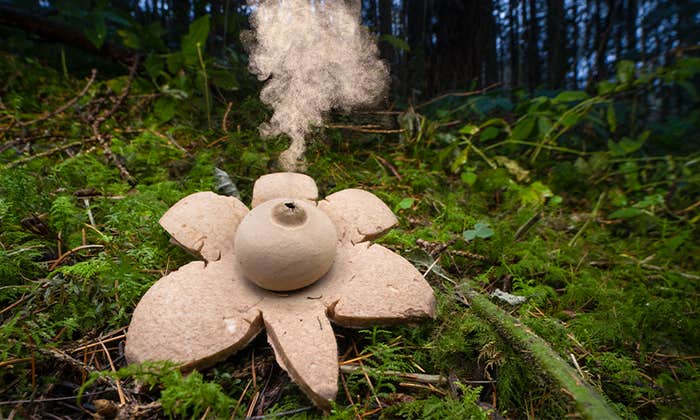Skeptics may call Valentine’s Day a Hallmark holiday, but its appeal is deeply embedded in our nature. Evolutionarily speaking, courtship rituals are far older than Saint Valentine. Nautilus spoke with Ken Kraaijeveld, an evolutionary biologist at VU University Amsterdam, about the rules of attraction, what females want, and how the heck anyone can even begin to guess.
Which animals celebrate a sort of Valentine’s Day?
Birds that breed every season do. For example, King Penguins are fantastically patterned, and when a new pair meets, they stand opposite one another and shake their heads vigorously. I imagine King Penguins would be much more inclined to keep up Valentine’s Day exhibitions every year than birds with long-term commitments. Those tend to look much more drab, and they perform less dramatic courtship displays.
I can relate. I am in a very long-term partnership, and I tend not to make very much of Valentine’s Day.

But Valentine’s Day is more about couples than hook-ups. Do you see any analogous behaviors in birds?
Actually, yes. I spent a lot of time working on a monogamous bird species, the black swans in Australia, and they perform what’s called a triumph ceremony, where the male and female swim up to each other and start calling, and then raise their curly wing feathers as if they were ornaments. They do this even when they’re a couple with chicks. Some researchers say it’s to reaffirm their pair bond, but my problem with that explanation is that I can’t figure out why you would need an extravagant display. I would think a little cuddle or something that’s not so obvious would do the trick.
In swans, I’ve learned there’s more to it. I noticed that they perform this display only when there are other swans around, particularly when there’s a lot of competition for mates, territory, or food in the surrounding area. So, I think it’s much more likely that this display is to show other swans what a strong and dominant pair they are, rather than showing each other how much they care.
I don’t know if you can say the same thing is true for Valentine’s Day, but maybe the point of giving all these presents is really just to show off to other people.
Can your animal observations shed light on what women want?
It’s very difficult to figure out why a female is attracted to one particular thing and not another. In the 1980s, a biologist, Nancy Burley, pasted white or red feathers on the heads of male zebra finches [birds] to see if it made a difference to females. They paired up with the males with a white crest, but disliked those with a red one. I think that indicates that females can pick up on some very arbitrary traits.
Is seduction typically visual?
No, it depends on what kind of signal an animal can produce, on what kind of signal their receiver notices best, and it depends on the environment. For example, a lot of frogs call for mates by croaking in various ways. But if they live in a noisy area, they need to rely on other signals. There are frogs along noisy streams that wave their feet in the air to attract mates instead.
But humans probably rely on visual signals most; we pay a lot of attention to how people look and behave. People always talk about smells and pheremones, but of course that only works if you’re really close to someone. To me, that seems like it’s a bit too late—you’re already quite advanced at that point.
How do scientists know when a male is “dressed to impress” a female?
Charles Darwin focused on the most obvious cases—behaviors or traits that only male members of a species had, which could not be explained by natural selection. If natural selection was the only force acting, you would not expect male peacocks to have extravagant blue and green feathers, because that increases their risk of getting attacked by a tiger. So, Darwin proposed the theory of sexual selection to account for how a feature like these feathers evolved through mating preferences. The main hypothesis for how the preference came to be is that a male with elaborate feathers is able to survive despite his “handicap,” so he must be healthy.
Someone who looks like Brad Pitt might attract a lot of mates, but then not have as many kids as us ugly people.
Darwin was right. We see signs of sexual selection in progress. For example, in Lake Victoria in East Africa, there are two populations of cichlid fish that no longer interbreed. Females from the population in deep water prefer reddish males, and those in shallower water go for blue males. Genetically, the two populations are now distinct, but they can still mate if they’re put together in a tank. Eventually, they’ll lose the ability to do that too as their genetic compositions drift apart. They’ll be two separate species.
However, Darwin paid less attention to the evolution of ornaments and elaborate behaviors that both sexes have. It’s a lot harder to tell how these evolved. To go back to black swans, males and females with very curly wing feathers are dominant in social interactions, whether it be in competitions over food, space, or mates. So a potential suitor may be looking at wing feathers specifically, or perhaps swans with curly feathers more often win territory, and then suitors prefer swans with territory. If that’s the case, sexual selection would really just a subset of social selection.
Where I live in Brooklyn, groups of young guys on motorcycles do wheelies through traffic, down the length of a city block. Would you say they’re signaling to females?
Maybe, or are they doing it to impress each other? This is the problem with all of this research on signaling. I agree that these young guys are signaling something, but what and to whom—that’s not straightforward. It’s very tricky to study humans. Anything I’m going to say is through the eyes of a western European male interpreting the world as I see it.
Then why do you think you know what birds want?
They’re simpler to study, especially for species that mate and then leave one another. In those cases, females mainly assess whether a male might have genes that will benefit her offspring. Genetics is important for humans too, but so is whether a mate can provide resources for kids so that they can be healthy and successful. And males and females tend to stay together for a long time, so then there are things like companionship that mates look for in one another.
I don’t know how to study love.
Also, contraceptives and our attitudes towards having kids are changing the game. When biologists think about sexual selection, we’re thinking about traits that females like, which are then passed on to offspring. But someone who looks like Brad Pitt might attract a lot of mates, but then not have as many kids as us ugly people. Our reproductive success no longer seems to be determined by what a person looks like, how much money they make, or how they behave. Maybe now it has more to do with how religious a person is—at least in Holland, religious fundamentalists have the largest families. Don’t ask me to predict where any of this is going, but suffice to say, it’s more complicated than what I observe in birds.
You focus your work on sex and seduction in the animal kingdom, but what about love?
I don’t know how to study love. How do you know how an animal feels? But, anecdotally, I’ve heard that if you have two parrots—birds that mate for life—and you take one of them away, the other parrot dies or else acts depressed. We can’t know for sure that it’s depressed, but I believe it may be. Our emotions had to have come from our animal ancestors. Surely, love isn’t a human invention.






























